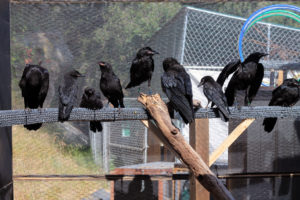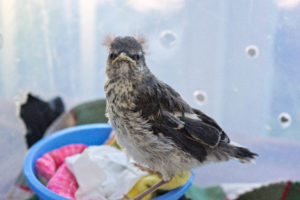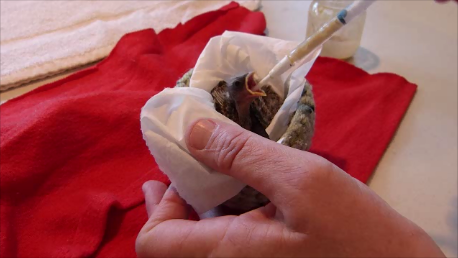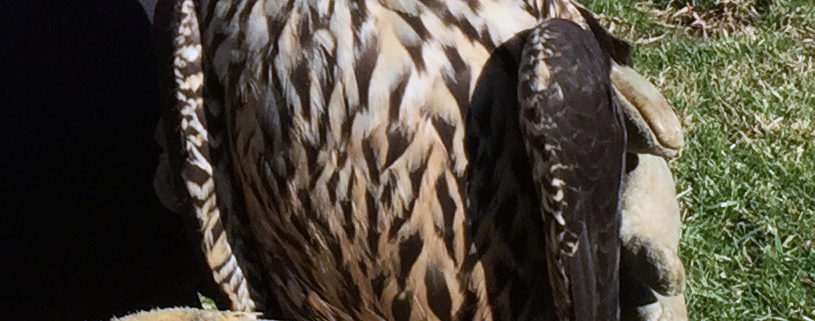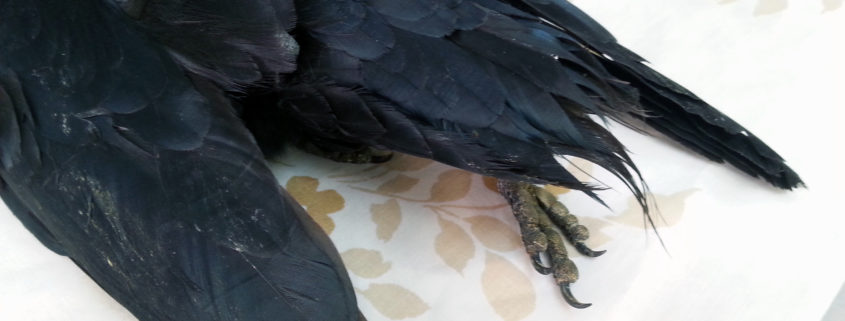Room for Swallows to Soar
By Denys Hemen, Hospital Manager
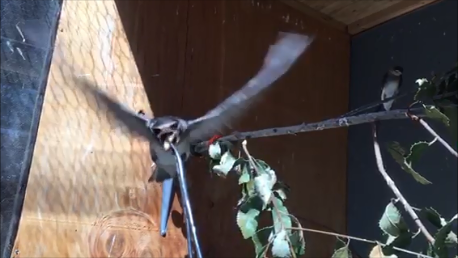
A Cliff Swallow eats a mealworm “on the wing.”
Photo By Jenn Guess
Here at California Wildlife Center space has always been at a premium. As the only rehab center in Los Angeles County that rehabilitates baby songbirds, space disappears quickly in the springtime. But, anytime you get a large number of baby birds crammed into a small area many problems can arise. It becomes very hard to keep them clean. Internal parasites can run rampant. In general, just being inside can cause some developmental issues. Birds just want to be outside where they belong! Our swallows were getting anxious to stretch their wings but would continue to eat from our hands inside. They are notorious for their extended weaning period. These trouble makers would constantly escape from their enclosure and fly around the room but were still too young for our large aviary. That’s why we have constructed our fledgling cliff swallow aviary!
This small ( 6ft x6ftx 8ft tall ) but secure aviary allows our younger swallows, who aren’t quite ready for the big aviary yet, to stretch their wings. They have more room to move around and develop at a much quicker pace. Inside their aviary, we have free choice food but some of these young ones haven’t quite grasped the whole self-feeding thing yet. That is where we come in! Every 45 mins we enter the aviary and hold up a juicy worm with tweezers. The swallows swarm around, dive down, and grab the worm from our grasp! This gives them some much needed practice because once in the wild these birds will catch flying insects “on the wing”. We also collect fruit scraps in buckets that are left inside the aviary to attract fruit flies. The swallows practice their hunting skills on these tiny flying insects.
Once the whole group is eating on their own and refuse hand-feeding, we move them to an aviary that is nearly 10 times larger where they develop their flight muscles and prepare to move on to the next step, a release into the wild!

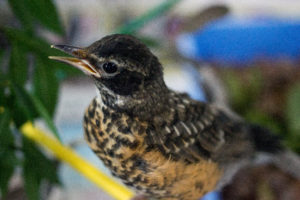
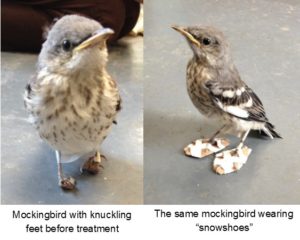 the bird to have to stand on the tops of her toes which were curled under and causing her additional injury.
the bird to have to stand on the tops of her toes which were curled under and causing her additional injury.